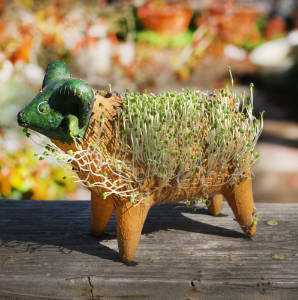Sprouts Category

Sprouts spring from newly germinated peas and beans. They won't add much in the way of nutrients--or calories--to your diet, but they're tasty and inexpensive.
There are many varieties, ranging from mild and crunchy mung bean sprouts to spicy and delicate radish sprouts. Raw sprouts are great in salads and sandwiches, and the sturdier varieties can also be stir-fried briefly.
Varieties:
alfalfa sprouts
These are too wispy to cook, but they're great raw in salads and sandwiches.
Learn morebroccoli sprouts
These are rich in sulforaphane, a cancer-fighting compound. They also have a pleasant, peppery flavor.
Learn morechia sprouts
These resemble alfalfa sprouts, and can be harvested right off that ceramic chia pet you got as a gift.
Learn moredaikon sprouts
These have a pungent, peppery flavor that works wonders for otherwise bland salads and sandwiches. They're too delicate to cook, so always serve them raw.
Learn moremung bean sprouts
These are the large sprouts that are common in supermarkets. They're crisp and nutty, and they're the best sprouts for stir-frying, though they can also be served raw. Select bean sprouts that are crisp and white with just a tinge of yellow. To keep them fresh, rinse them off and immerse them in cold water, then store them in the refrigerator. They're very perishable, so try to use them within a day or two. Canned bean sprouts are a very poor substitute for fresh.
Learn moresoybean sprouts
These sturdy, crunchy sprouts are good in salads or stir-fries. They become bitter when the tails get too long, so eat them soon after they sprout.
Learn moreSprouts
Sprouts spring from newly germinated peas and beans. They won't add much in the way of nutrients--or calories--to your diet, but they're tasty and inexpensive. There are many varieties, ranging from mild and crunchy mung bean sprouts to spicy and delicate radish sprouts. Raw sprouts are great in salads and sandwiches, and the sturdier varieties can also be stir-fried briefly.
Learn more











































































































































































































































































































































